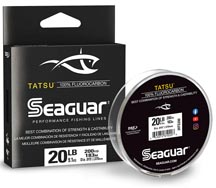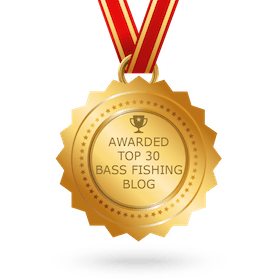In the past few years, forward-facing sonar has taken over the fishing world and has become an effective way to win high-level bass tournaments.

Forward-facing sonar has helped anglers fishing for many different species become more successful. While it’s also controversial among some anglers, there is no denying that it has helped anglers catch more fish. As technology has evolved, those using it have discovered ways to make it even more helpful.
Professional bass anglers Trey McKinney, Greg Vinson, and Mark Daniels, Jr., are among those finding great success with it. They each offered a tip that they felt was critical to catching more fish with forward-facing sonar.
 McKinney focuses on casting accuracy
McKinney focuses on casting accuracy
Trey McKinney may be just 18 years old, but he’s already built an impressive tournament fishing resume that includes qualifying for next year’s Bassmaster Elite Series. He’s a versatile angler who can fish with many styles, but he’s excellent with his Lowrance Active Target forward-facing sonar. His advice is to take the time to master your casting accuracy to catch more fish.
“You have to be able to hit your shots; it’s a huge thing to make a cast to exactly what you see on your screen and right in front of the fish,” he said. “The easiest way to practice is to line up with a bridge piling, timber, buoy, or other visual marker. Then position the boat at different angles until you can hit it at 50, 60, 70, 80 feet and those casting distances will become second nature.”
McKinney uses several lures when fishing this way but says a jig is hard to beat. He prefers a Strike King Structure Jig or Baby Structure Jig and fishes it on 20 lb Seagaur Tatsu fluorocarbon.
“A jig shows up very well on the screen and you can also work it several different ways,” he said. “It has a good action as it falls, but I can also swim it, stroke it, or pull it to give it a different look and get a fish to react to it. I like 20 lb Tatsu because it has a smaller diameter than other lines the same size, so you get more power without affecting your casting accuracy.”
Vinson scans to hunt
Major League Fishing pro Greg Vinson grasped the technology right away and his Garmin LiveScope has been one of his biggest weapons in the past few seasons. He approaches it like hunting and scans areas for baitfish, grass, and bass while moving quickly to cover ground.
“Garmin LiveScope is a great tool for searching an area, whether it’s somewhere you fish all the time and know very well or when fishing a place for the first time,” he said. “I generally scan while going forward fairly quickly as I also fan the trolling motor back and forth to search. I’m looking for baitfish, bass, and cover.”
When he sees something, he slows it down and plans his next move. “If I see anything, I stop the trolling motor immediately,” he said. “If it’s far enough in front of me, I’ll reverse the motor and ‘put on the brakes’ to stay put. This allows me to zero in on the target and line up my cast. It takes patience, but that first cast is your best chance to get bit.”
trolling motor immediately,” he said. “If it’s far enough in front of me, I’ll reverse the motor and ‘put on the brakes’ to stay put. This allows me to zero in on the target and line up my cast. It takes patience, but that first cast is your best chance to get bit.”
Once he’s lined up, whether on a group of bass, baitfish, or piece of cover holding a single fish, he makes his cast. His preferred bait is a jerkbait, but he also relies heavily on a drop-shot rig.
“The jerkbait is so good because you can call fish up to it. It’s your best chance to get their attention,” said Vinson. “It has a lot of action and you can keep it right in front of the fish. Day in and day out, I’m fishing it on 12 lb Seaguar Tatsu fluorocarbon because it has a small diameter. This gives the bait better action and it’s strong enough that you can handle bigger bass.”
When the fish are too deep to reach with a jerkbait, the drop-shot comes into play for Vinson. “A drop-shot is another great tool that shows up well on forward-facing sonar and works great when the fish are too deep for a jerkbait,” he said. “I like to fish it with 15 lb Seaguar Smackdown in the Stealth Gray color.
I prefer the low-visibility line in these situations because many fish are suspended and when a bright-colored braid passes through them, I feel like it’s a turnoff sometimes. I like 10 lb. Gold Label for my leader because it’s very thin but strong. It’s like miniature goat rope.”
MDJ’s display
No matter what brand of electronics you run, there are options for changing the display with different color palettes. Daniels believes it’s something that’s overlooked by many and he adjusts them based on the situation, either the brightness of the sun or water quality.
“It’s basic, but many anglers don’t adjust the colors enough. There are so many options on my Garmin units,” he said. “I have a few favorites, but everyone sees things differently and you need to play with them to find one that makes the fish and structure pop out to you. I like some colors for most situations, but I’ll also change them if the water is more turbid or I’m fishing on an overcast day. Finding the color that you see best can make all the difference.”
Once his LiveScope colors are dialed to his liking, Daniels generally sticks with a jerkbait like the Bill Lewis Scope Stik when fishing and watching his forward-facing sonar. The bait is a perfect example of the popularity of forward-facing sonar, as it was designed with flat sides and a wider surface area to show up better with the technology.
Lewis Scope Stik when fishing and watching his forward-facing sonar. The bait is a perfect example of the popularity of forward-facing sonar, as it was designed with flat sides and a wider surface area to show up better with the technology.
“A jerkbait is very easy to see on your LiveScope and you can watch the bait the whole way during the retrieve and see how the fish react,” he said. “A drop-shot can also be excellent, and I’ll also throw a Texas-Rig or jig at times.”
When fishing his jerkbaits, Daniels prefers 12 lb Seaguar AbrazX fluorocarbon. “I’m an AbrazX guy. I think it has the best balance of abrasion resistance, toughness, and casting distance,” he said. “Making a long cast is very important if you are trying to hit targets out in front of the boat.”
Forward-facing sonar has taken the fishing world by storm and while it’s an effective tool, there is a learning curve. These three professional anglers have found a way to make it more efficient on the water and their tips will help you catch more fish with the latest technology in marine electronics.











